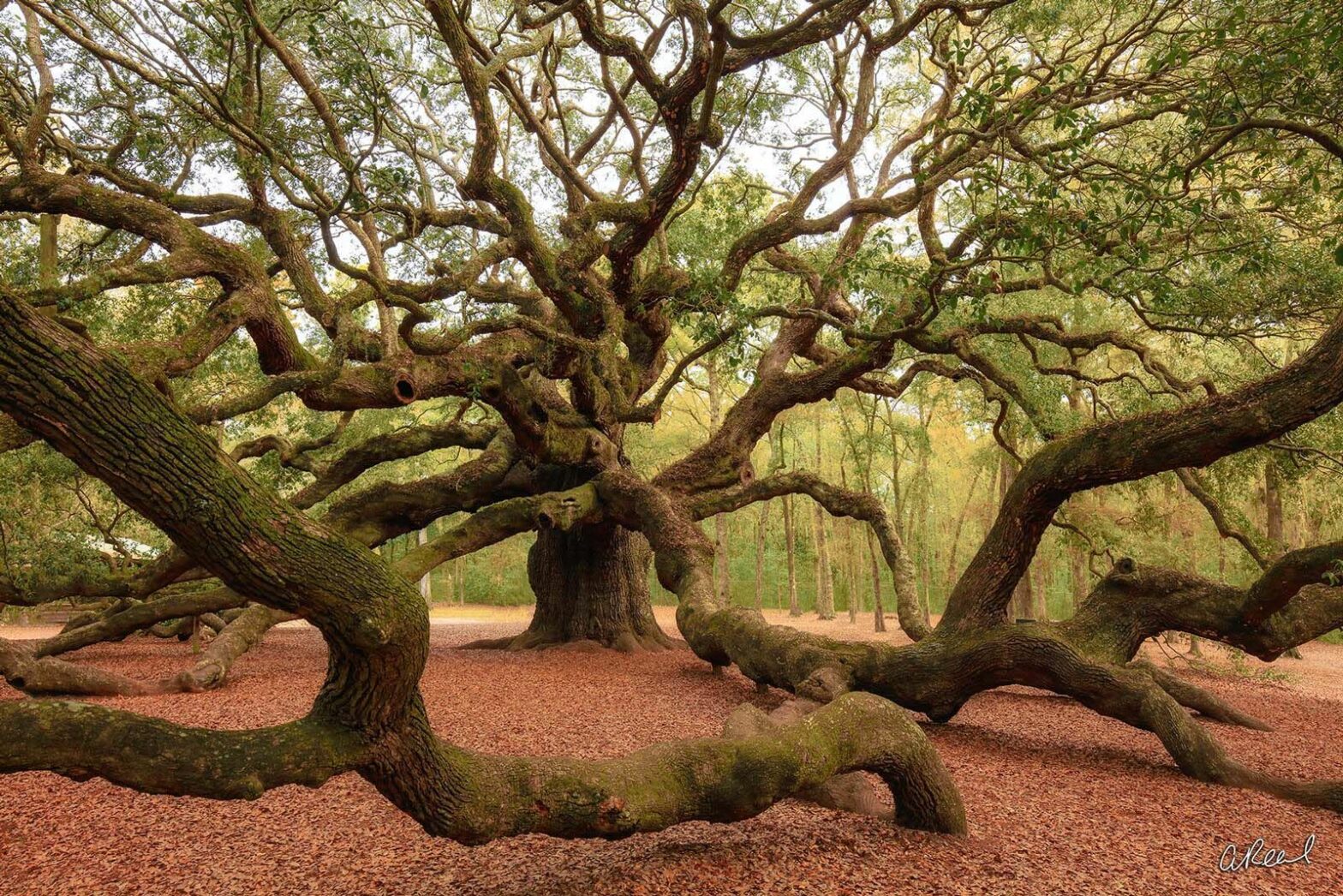[ad_1]
Ancient Sentinels | Exploring the World’s Oldest Trees
Nature has witnessed the rise and fall of civilizations, the passing of centuries, and the evolution of countless species. Throughout human history, trees have stood by silently, serving as living witnesses to history, carrying within their rings the secrets of time itself. While they hold a profound and enduring fascination for many of us, trees are vital symbols of wisdom, change and the journey of life. From the towering redwoods of California to the ancient yews of Eurasia, trees have woven their roots deep into every culture and human consciousness. They provide shade, shelter, sustenance, and inspiration, and their significance transcends mere biology.
In this blog post, we are going on a journey to uncover the unbelievable tales of Earth’s ancient, upright guardians – trees that have continued to grow and thrive for thousands of years. These arboreal giants have borne witness to the rise and fall of civilizations, silently chronicling our planet’s dramatic history. Each one tells a unique story, and as we venture into the world of these venerable giants, we’ll uncover some of those stories while also gaining a glimpse of the future where conservation and preservation efforts are paramount.
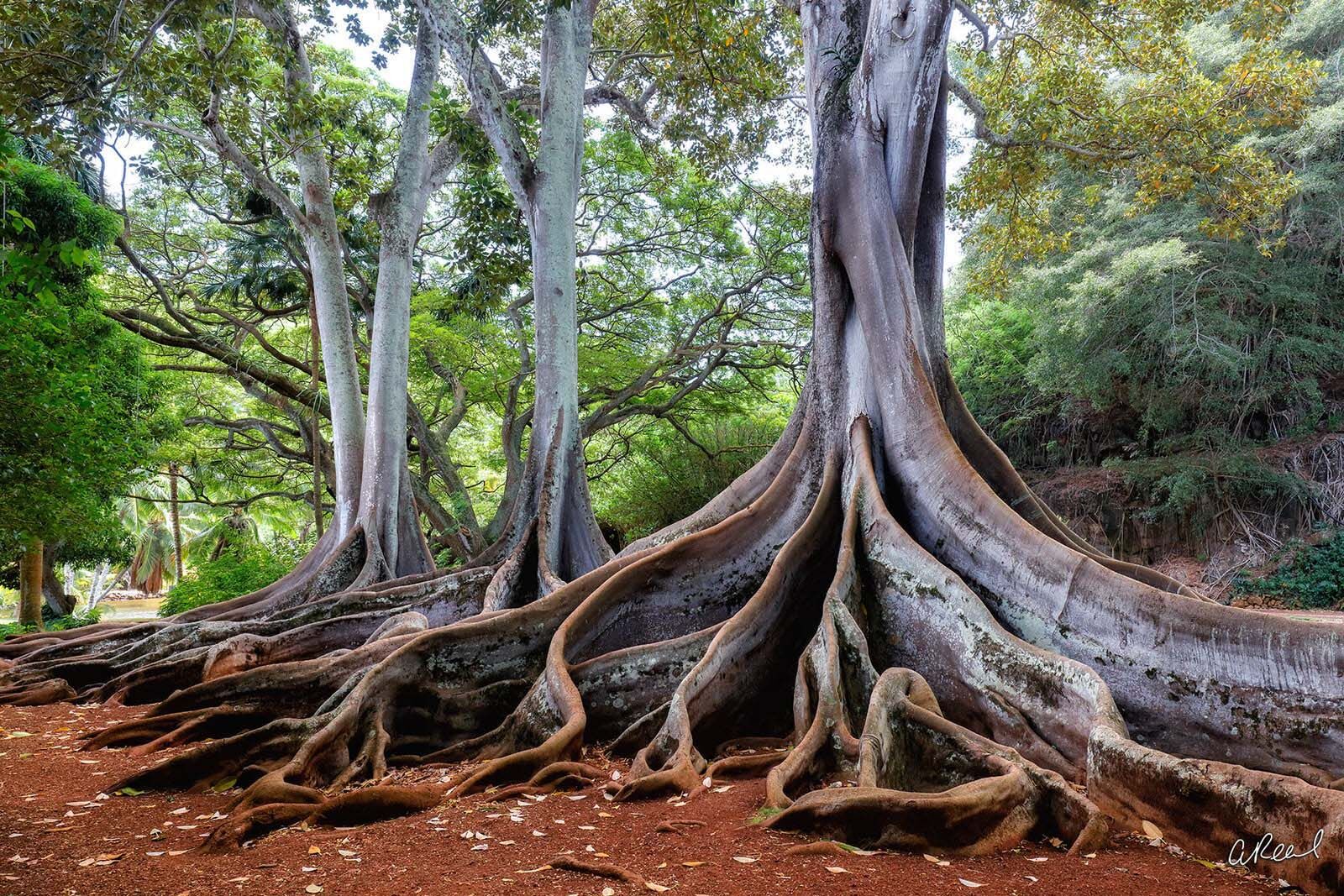
The serpentine roots of a stand of Moreton Bay figs in Kauai are like the iron walls of a living fortress. Anchored in the damp earth, the lavender trunks are free to conquer the sky above. Fine Art Limited Edition of 100.
Methuselah | White Mountains, California
Residing in the remote White Mountains of California, Methuselah is a truly remarkable tree – estimated at approximately 4,900 years old, which would make it the oldest known living bristlecone pine on the planet. This ancient sentinel has endured millennia of harsh environmental conditions including extreme cold, arid soil, and relentless winds. Its resilience serves as a living, breathing testament to the enduring power of nature’s forces. Methuselah is a symbol of longevity, evoking awe and reverence from all those who are blessed to gaze upon it.
Jomon Sugi | Yakushima Island, Japan
A gigantic, looming Cryptomeria tree (colloquially known as a Japanese sugi pine or Japanese red cedar), takes up the second spot on our list. Jomon Sugi can be found on Yakushima Island, Japan, and is estimated to be anywhere from 2,100 to a staggering 7,000 years old. This historic tree has weathered countless storms, typhoons, and changing climate conditions, yet it continues to thrive in the lush, mystical forests of Yakushima.
Revered by locals and tourists alike, Jomon Sugi is evidence of Japan’s deep-rooted cultural and historical connections with nature. Its enduring presence serves as a reminder of the enduring prowess of nature, inviting all who encounter it to reflect upon the beauty of these ancient trees.
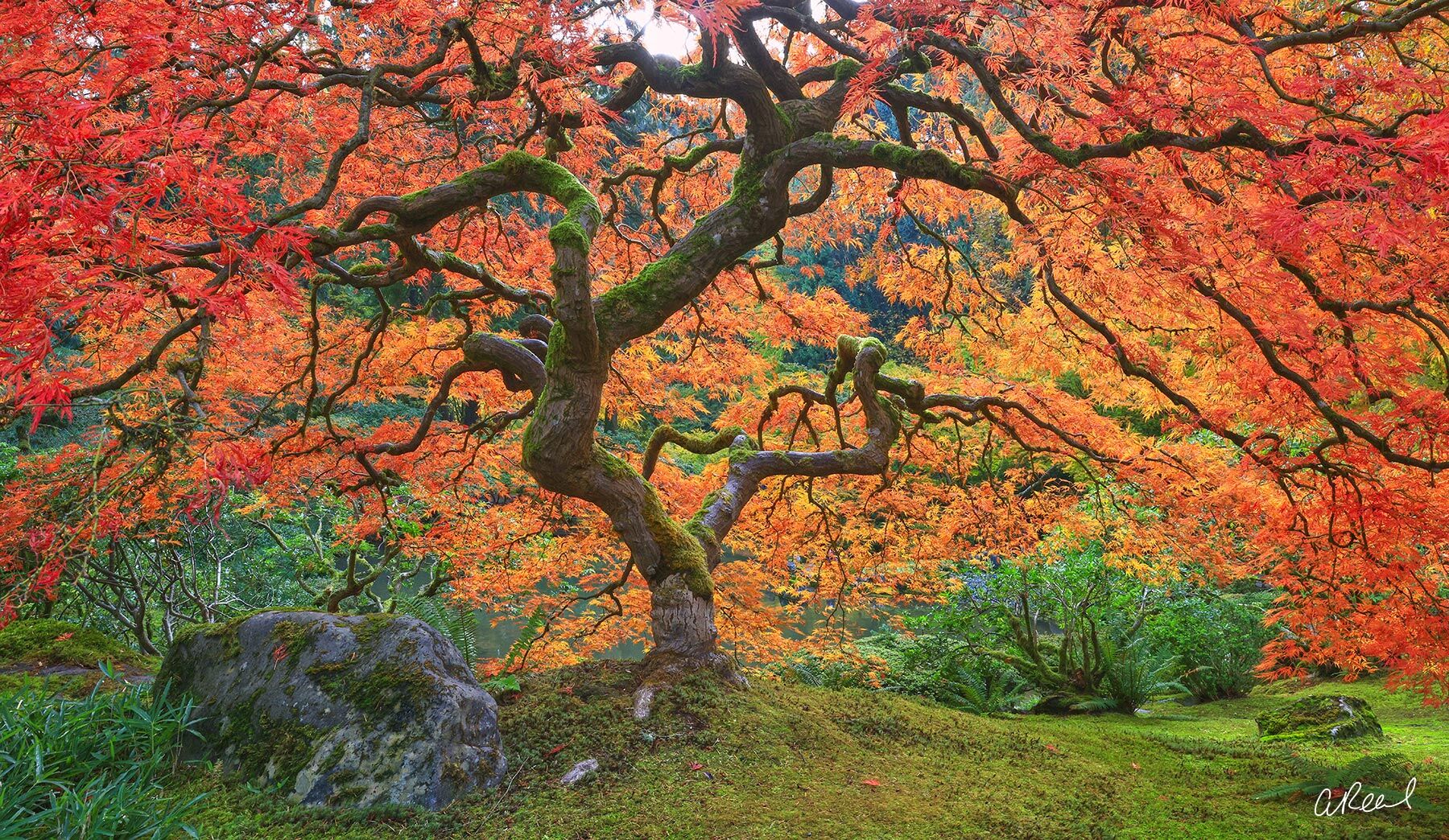
Transform your space with Aaron Reed’s luxury fine art photography print, Embers, from his Panoramic Wall Art collection. Order yours today! Fine Art Limited Edition of 50.
Llangernyw Yew | Conwy, Wales
Located in a serene churchyard of the Llangernyw village in Conwy, Wales, the Llangernyw Yew watches as the seasons come and go. Estimated at around 4,000 to 5,000 years old, this ancient yew is a living relic, predating even Stonehenge. It holds a revered place in Welsh folklore and history, serving as a symbol of strength, perseverance, and continuity.
The Llangernyw Yew’s gnarled branches and lush, green foliage have offered shade to generations of visitors who have sought solace or reprieve beneath its sprawling canopy. Its longevity and connection to Welsh heritage make this a cherished and respected living monument, embodying the deep-rooted bond between people and trees.
Sarv-e Abarkuh | Yazd Province, Iran
Also known as the Zoroastrian Sarv and the Cypress of ABarkuh, Sarv-e Abarkuh is a Persian cypress in the Yazd Province of Iran. Like most of the trees on this list, Sarv-e Abarkuh is also thousands of years old – estimated to be between 4,000 and 4,500 years old. Not only is this behemoth one of the oldest living trees on Earth – it’s also a cultural icon that’s deeply ingrained in Persian and Iranian history.
Its name is in reference to a nearby village, and the tree itself has survived millennia in the desert amid war, regime changes, drought, and much more. This ancient sentinel continues to inspire awe while reflecting the enduring spirit of the region and its people.

Heavenly beams of cold sunlight swell like a mandala through the thick canopy of a redwood forest along the Del Norte Coast in Northern California. The trees themselves, shrouded in a diaphanous mist, stand like dark sentinels watching over the surrounding beds of bracken. Fine Art Limited Edition of 50.
Gran Abuelo | Alerce Costero National Park, Chile
Like many of the world’s oldest trees, Gran Abuelo’s home is in a secluded, remote valley in southern Chile (within the Alerce Costero National Park). Gran Abuelo – or “great grandfather” – is thought to be approximately 3,650 years old. What sets Gran Abuelo apart is its status as an Alerce tree, a species that’s closely related to the giant sequoias.
The conservation efforts surrounding this primordial giant underscore its ecological importance. Indeed, the existence of these trees serves as a poignant reminder of humanity’s responsibility to protect these elder giants and ensure they continue to enrich the Earth with their enduring presence.
O Patriarca | Amazon Rainforest, Brazil
Lovingly known as “The Patriarch Tree”, O Patriarca resides deep within the Amazon Rainforest in Brazil. Estimated to be between 3,000 and 3,600 years old, this giant Samaúma tree stands tall as a symbol of the ecological importance of the Amazon. Not only does it shelter a vast array of biodiversity within its colossal trunk – it also connects deeply to the indigenous cultures of the region and is revered as a sacred, living entity.
As the Amazon continues to face threats from deforestation and climate change, O Patriarca is a reminder of the irreplaceable value of these ancient sentinels. They help maintain the delicate balance of the planet’s ecosystems while also absorbing carbon from the atmosphere and replenishing oxygen levels.
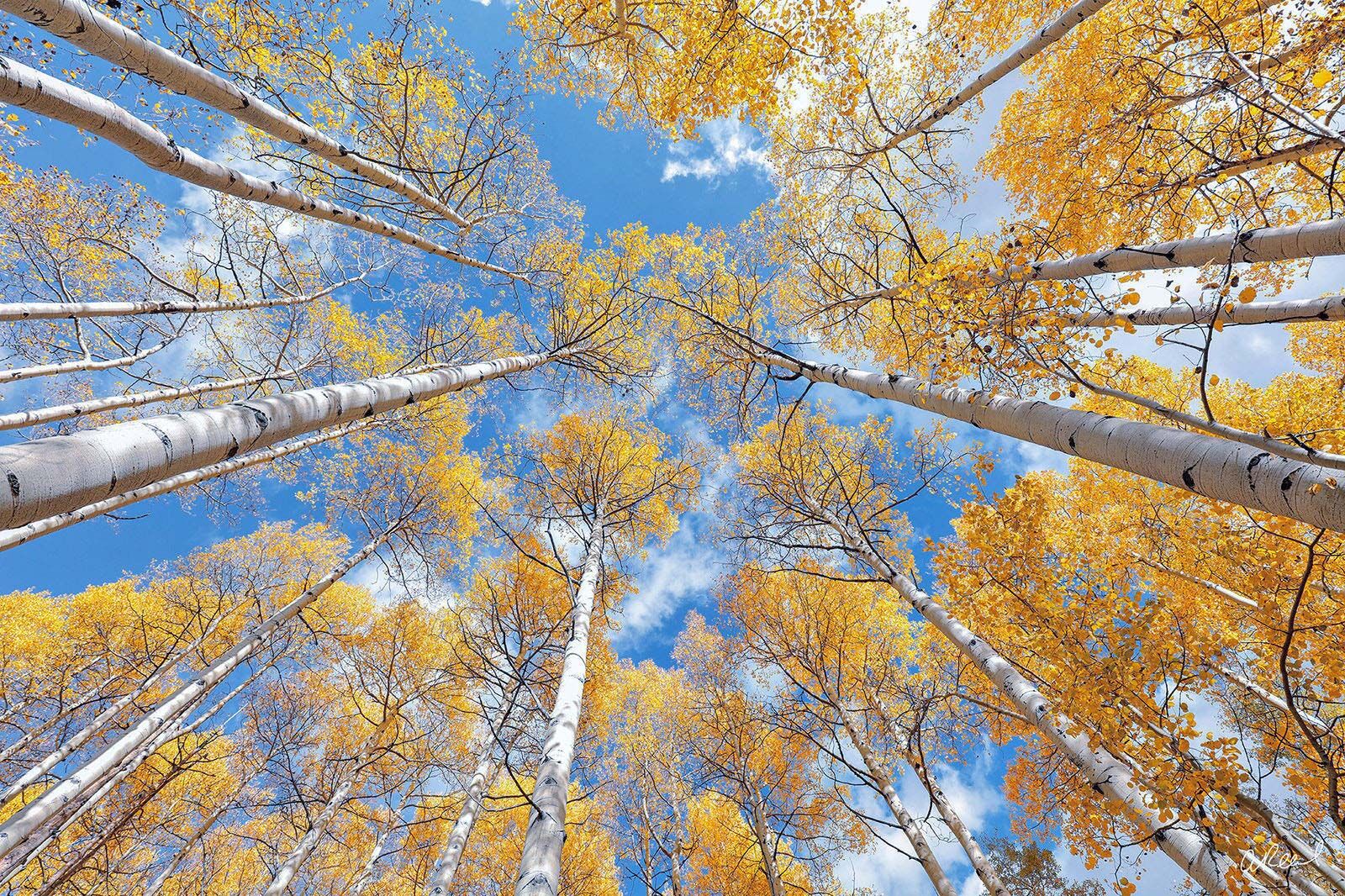
Fall aspens, like Grecian columns, reach towards transient puffs of cloud in a brilliant blue sky. When the days grow chill, groves of clonal aspen turn hillsides like this one near Aspen, Colorado into cascades of rippling gold. Fine Art Limited Edition of 50.
Sajama Tree | Sajama National Park, Bolivia
Deep within the high-altitude terrain of Sajama National Park in Bolivia, the Sajama Tree has grown for 2,000 to 3,000 years. This ancient Queñua tree has shown the adaptability and perseverance of natural forces even at high altitudes. It has served as a crucial resource for indigenous communities – providing wood for fuel and shelter.
Beyond its practical uses, the Sajama Tree holds immense cultural significance, as it’s featured prominently in indigenous rituals and various traditions. The Sajama Tree is a living connection to the rich heritage of the Andean highlands, reminding us of the profound role that nature plays in sustaining and shaping human civilization.
Chestnut Tree of One Hundred Horses | Mount Etna, Sicily
More commonly known as the Hundred-Horse Chestnut, this tree is the tallest, broadest, and oldest known chestnut tree in the world. Located on Linguaglossa road in Sant’Alfio, on the eastern slope of Mount Etna in Sicily — only 8 km (5.0 mi) from the volcano’s crater. While experts figure this tree is somewhere between 2,000 to 4,000 years old, it has borne witness to centuries of human history. In fact, it gets its name from allegedly having sheltered a group of one hundred Aragonian horsemen during a tempestuous rainstorm. Its sprawling canopy and impressive girth reflect the interconnectedness all humans share with our arboreal siblings.
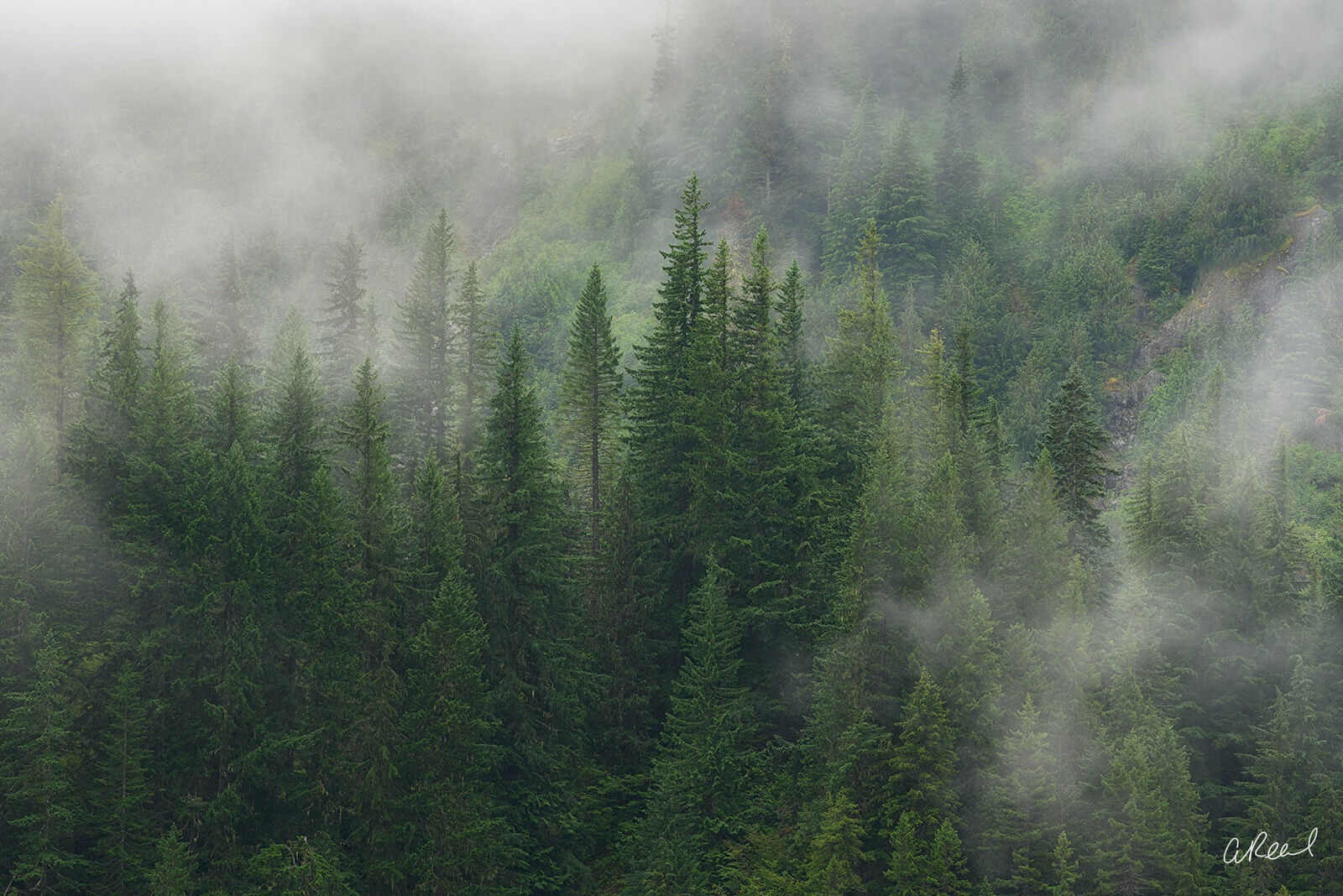
Wisps of fog drift silently down a lush hillside in the foothills of Mount Rainier National Park. Wraithlike, stands of fir and aromatic red cedar keep watch in the sheltered vales. Fine Art Limited Edition of 50.
General Sherman | Sequoia National Park
According to the National Park Service, the General Sherman Tree is the world’s largest tree when measured by volume. Located in California’s Sequoia National Park, General Sherman has stood for around 2,200 years.
Named after Civil War General William Tecumseh Sherman, this looming colossus captivates with its immense size while symbolizing the enduring spirit of our species’ conservation efforts. This tree in particular reminds us of how important it is to preserve these ancient trees and the myriad ecosystems they support.
Living Testaments of Earth’s Rich History
In the tapestry of our world’s greatest natural wonders, ancient trees are the remarkable threats that weave together stories of endurance, adaptation, and perseverance. All around the world, trees both large and small bear witness to the history of our planet and human civilization. These trees inspire us with their resilience and remind us to be diligent stewards of our planet and the life that calls our planet home.
While the images in this blog are not representative of the oldest living trees in this list, they are a living testament to my personal love of and connection with trees. Tree photography has always been my favorite subject and all types of trees, from smallest to greatest and youngest to oldest, continue to inspire me every day of my career and my life.
These ancient sentinels are much more than mere artifacts from the past; they are living treasures, fragile yet robust, and they hold the key to unlocking a greener, more sustainable future. In nurturing and safeguarding these timeworn beauties, we enshrine their stories in our own history. May they continue to be a part of our planet’s legacy for generations to come.

The wild gnarled branches of the ancient Angel Oak snake across the sky and burrow into the ground in a forest in South Carolina. A uniform blanket of copper leaves adorns the soil beneath a grey sky. Fine Art Limited Edition of 50.
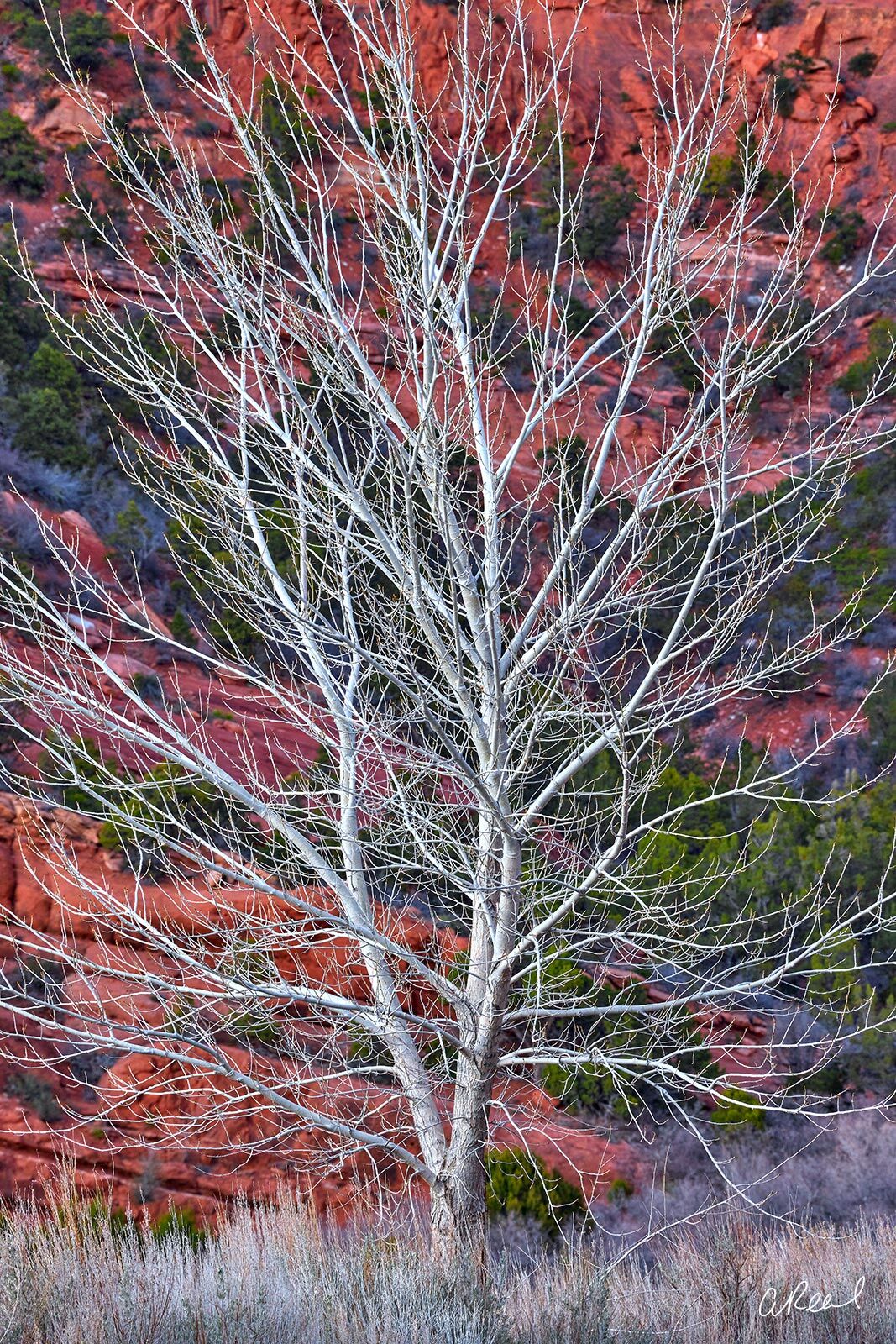
The bleached skeleton of a leafless tree weathers the cold chill of a desert valley in Zion National Park. The rosy sandstone, vibrant even in the depths of winter, bleeds through the spider’s web of bare branches. Fine Art Limited Edition of 50.
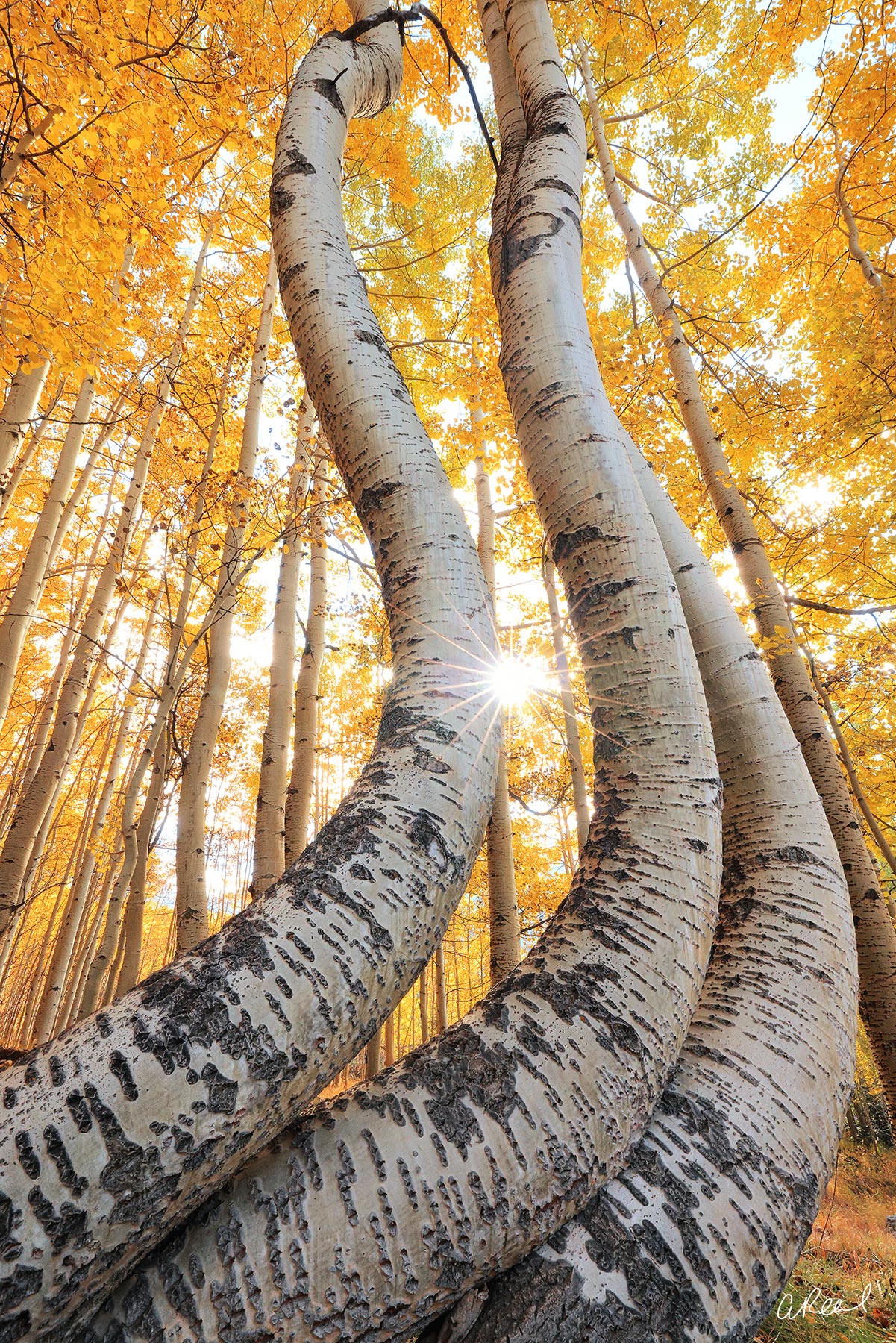
The early morning sun breaks through a strand of dancing aspen trees that fought though years of heavy snowfall to to grow against all odds near Telluride, Colorado. Fine Art Limited Edition of 50.
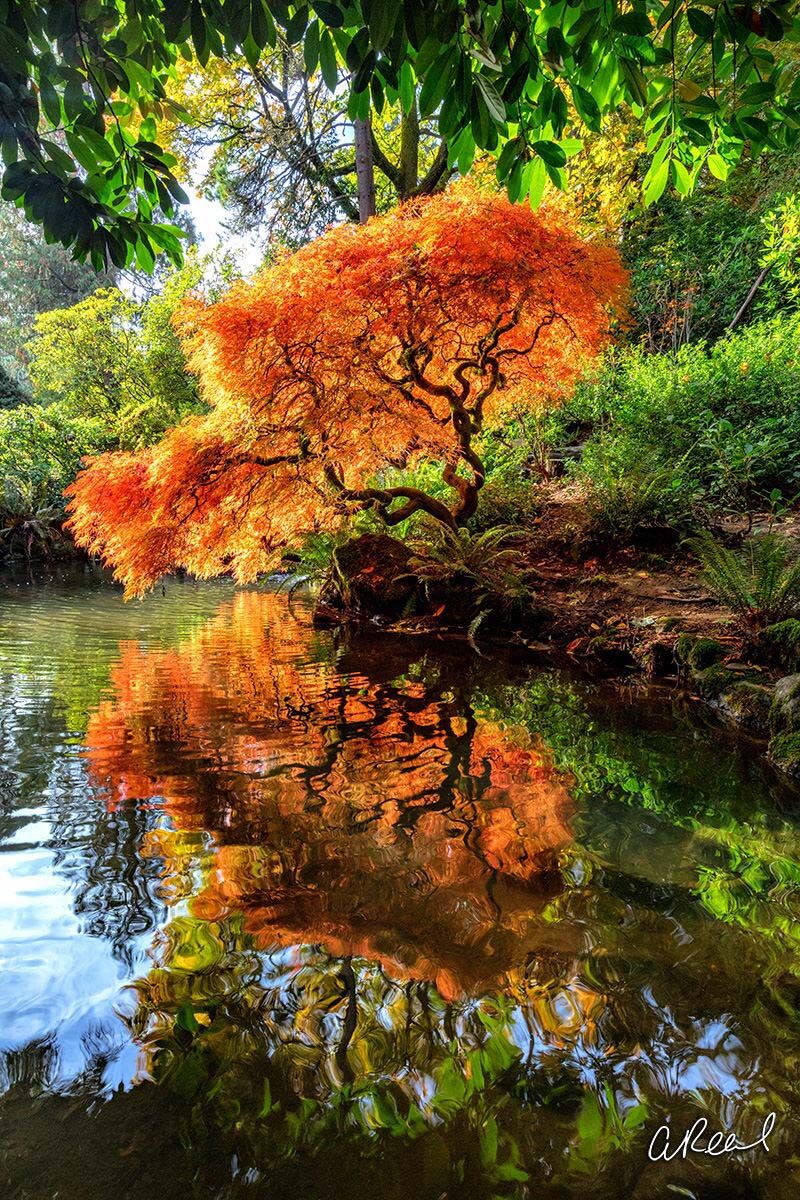
The blazing crown of a gnarled Japanese maple stands stark against the emerald tapestry of the surrounding vegetation. Suspended above the ringing waters of a reflecting pool, the diffused rays of the sun give the tree a numinous glow. Fine Art Limited Edition of 100.
[ad_2]
